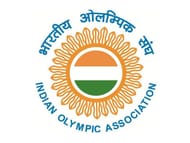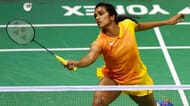The Board of Control for Cricket in India, which owns the cash-rich IPL Twenty20 league, recently sent out a tweet which read:
‘Taking note of the border skirmish that resulted in the martyrdom of our brave jawans, the IPL Governing Council has convened a meeting next week to review IPL’s various sponsorship deals’.
The Indian Olympics Association recently stated:
“Li-Ning is a Chinese brand and we have an agreement till the Tokyo Olympics. If there is such a position, then we will have to think then this issue will be discussed in the IOA General House. No decision is taken at the individual level. We have an agreement with them (till the Tokyo Olympics). They were also our kitting partners during the Rio Olympics. But we are with the country first."
As Robert Greene famously says in ‘The 33 Strategies of War':
“Grand strategy is the art of looking beyond the present battle and calculating ahead. It requires that you focus on your ultimate goal and plot to reach it."
Both the statements above, by the Indian Premier League and Indian Olympics Association, are attempts to achieve minor aims that could lead to wider losses. It’s like an attempt to win a superfluous battle only to lose the ultimate war.
The sponsorship behind major sporting events in India

India’s costliest sports property, Indian Premier League’s title sponsorship bid was retained by Vivo with a 2199 crore bid for five years. This was a 544 percent increase over the previous contract.
Vivo also paid 300 crores to command the title sponsorship rights of the Pro Kabaddi League for five years. After the IPL, the Pro Kabaddi League is the second most popular league in the country. Oppo, their rivals, outbid them 1079 crores to Vivo’s 768 crores to become the Indian cricket team’s primary shirt sponsor in 2017.
In February, 2019, another Chinese company, Li-Ning, signed PV Sindhu, who is currently India’s most popular sportsperson outside cricketers, as their brand ambassador. The contract was signed for 48 crores for four years. Afterwards, they signed on a handful of badminton players, including Kidambi Srikanth for 35 crores for four years and Parupalli Kashyap.
When compared to hugely popular sports in the country like cricket, and indigenous sports which have moved up the ladder like kabaddi, sponsors are hard to come by in the Olympic sports.
Li-Ning was chosen as the Indian contingent’s apparel sponsor as they were the highest bidders. The company signed a two-year multi-crore deal with the Indian Olympics Association, which included sponsoring the Indian athletes' apparel at the 2018 Asian Games and the Tokyo Olympics. The contract got extended as the Games were postponed till 2021.
But it’s not only about the sponsorship amount and the immediate damage. More importantly, we need to understand why these Chinese companies signed sponsorship deals with Indian sportspersons and Indian sporting properties.
The Vivos and Oppos of the world produce mobile phones for the masses. In a country having population of almost 140 crores, and with the mobile becoming more of a necessity rather than a luxury, these Chinese companies understand the significance of the huge Indian market.
Cricket is the game of masses in India and the IPL is its premium product. So, the best way to gather many eyeballs is to invest in the properties which are most popular with the masses. In the recent years, after innovative packaging and well calculated brand strategy, kabaddi and its league, the Pro Kabaddi League, are getting more traction. They are fast becoming the second most favored destination of the Chinese products.
Similarly, after Saina Nehwal tamed the Chinese players, a group of Indian badminton players, led by PV Sindhu, have caught the attention of the world. More importantly, they have become household names in our own country. In comparison to this, our progress in the Olympic sports on the whole has been understandably relatively slow.
But with the likes of TOPS on the top and Khelo India at the bottom of the pyramid, the country has taken a few certain transformative steps. Urban and semi-urban India have seen an increased consciousness for fitness and sports. Clearly, the Chinese sportswear brand Li-Ning wants to increase its footprint by riding on the momentum.
What will happen if IPL, IOA, or Indian sportspersons say no to these Chinese brands?

The sports federations and sportspersons need to understand a few crucial points before arriving at a decision.
Firstly, the Chinese companies are not doing us philanthropy - they are investing on the existing or the potential powers of their brands. In such a scenario, the pragmatic way out is to consolidate on their gains and further enhance their respective brand values.
The more powerful global sports properties India have, like the IPL and the kabaddi league, the more champions India will throw across different sports, like Virat Kohli and PV Sindhu.
The more medals and trophies the country will achieve across different sports, they will find more and more global companies willing to put in their money in Indian sports. And this money will be utilized for the further development of Indian sports.
Secondly, the severing of these sponsorship ties may give our federations and sportspersons a few debating points to score. But it will weaken Indian sports properties and their brand values. Any termination of an agreement prematurely and unilaterally, in a manner not contemplated under the agreement, could amount to breach of contract, and remedies of damages will be available to the other parties.
Thirdly, any such move will be sending the wrong message to all the perspective sponsors from across the globe. Why should we confine our entire thinking in terms of the Chinese companies only? Indian sport has the potential to attract attention from the best of the companies based out of US, Japan, Germany and Korea. Any knee jerk termination of the contract will definitely not set a healthy precedent for the future.
Considering all these points, the better strategy will be to utilize the Chinese and other sponsorship money to strengthen brands, and prepare and plan long term to end the dominance of the countries like China.
Loyalty and service to the nation on the part of the sports federations will bring in more efficiency and professionalism in their functioning, and the country will be able to catch up and overtake the best in the world.
Understanding China's investment strategy

In order to take on the rival, we need to understand the way the rival operates. India and China are the two fastest growing large economies of the world today. Why do aspiring businessmen enter the golf circuit? More than the love of the game, they want to be part of the circuit where business deals are made and best of practices are discussed.
Similarly, after becoming a powerful force in the Olympic sports, China realized that in order to enter the circuit of the developed countries, they need to increase their footprint in the most popular global sport - football. Though their dominance in the games like table tennis and badminton were giving them international attention, they knew they will not be able to penetrate the 'developed nation club' till they get into football.
China had no football related investments till 2014. However, as per a report by a Beijing-based investment research company, China’s investment in the global football industry between 2014 and 2016 was greater than the rest of the world.
Out of the 201 investments totalling €4.1bn in these three years, Chinese spending amounted to a whopping €2.2bn, which was €1.9bn more than the second placed country, which was the US.
The money was spent on acquiring famous clubs such as AC Milan (bought by Sino-Europe Sports). At the same time, star players from other countries started joining Chinese clubs while they were still in the middle of their careers.
China’s football ambitions were driven primarily by three factors.
Firstly, to make China the superpower in football. The government set up an ambitious plan to have more than 70,000 pitches available by 2020 all across the country. This includes 40,000 pitches in schools to be made available to the general public.
Secondly, to gain knowledge of how football industry works in countries like Italy and UK and make it available to the domestic sports sector.
Thirdly, to gain the kind of status which only comes from owning a football team.
India has a strong footprint in cricket and the strength of the soft power is visible. The idea should be to further consolidate the gains in cricket and expand this to other sports. This should most certainly include football, which in a manner unites the whole world.
Where does the actual problem lie?

Let us start with the Indian sports market. As per the data from the Ministry of Commerce, more than half of India’s sports equipment is from China. The decades of faulty policies combined with the continued negligence of India’s manufacturing sector has meant that Chinese products completely invade our markets.
Briefly, the long list of Chinese products in the Indian markets include sportswear, gym equipment, boxing head guards, mountain climbing accessories, wrestling mats, high jump bars, badminton and tennis racquets, table tennis balls, and shuttle-cocks. One can only sit and wonder as to whether we don’t have the wherewithal to manufacture these products also.
There are multiple layers to the problem. For instance, India has a strong manufacturing base for boxing equipment. But the leading companies are so pre-occupied in meeting the demands within the country that they haven’t gone through the international federation’s certification process.
The net result is Indian players being forced to use imported equipment to acclimatize themselves to different international competitions, though these products are available in the country.
Secondly, Indian sports manufacturers who export equipment in overseas markets are dependent on China for raw materials. Manufacturers of cricket bats and balls, hockey sticks and balls, boxing equipment, and chess fall in this category. In a nutshell, courtesy of cost and quality advantage, China today accounts for 65% of India’s imports in the sports market.
The sports market is just a small reflection of the overall problem. Why did we eventually realize as late as 2014 that we need to focus on mobile manufacturing and not be dependent on exports only?
India imports a lot of intermediate goods from China, and stopping the trade will affect our ability to produce finished products in many sectors. Import-dependent sectors such as automobiles, pharmaceuticals, electronics, and telecommunication will be severely impacted. It will impact the overall competitiveness of the Indian manufacturing sector and undermine our competitiveness to export.
What should India do?

Should India resign themselves to being a slave to Chinese imports?
The answer is definitely - NO. One possible solution is to resort to the lazy answers, such as banning trade and raising tariffs to win the temporary perception battle. The second way is to overcome our dependence on Chinese goods in sports and other sectors, and for this to fructify, our policy-makers need to put in real hard work.
Pahle chini kan aur phir chini naheen should be the approach. The goal should be to take this as the wake up call, be vocal about local, be aatmanirbhar - and emerge the winner in the eventual war.
As far as the Indian Premier League and Indian Olympics Association are concerned, they should resist the temptations to pull the goddam chain just when the train is set to gather the momentum.
And if someone from media questions this, the answer is simple. As per a rough estimate, Chinese companies give an annual advertisement worth 10 thousand crores to Indian news channels and publications. Henceforth, will all such sponsorship be turned down?
Get real-time updates on IPL 2025, live scores, IPL Prediction, match schedule, points table,Result & squad -CSK, MI, RCB, KKR, SRH, LSG, DC, GT, PBKS
